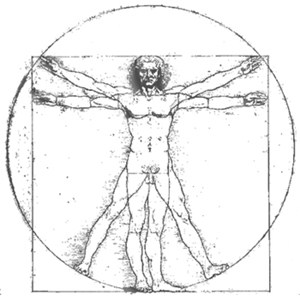
Acupuncture Gilbert, AZ.
Acupuncture Treatment and Dry Needling Therapy for Sports Injuries, Myofascial Pain Syndrome, Chronic Pain and Repetitive Strain Injuries.
How does Acupuncture help treat pain and sports injuries? In simple terms, Acupuncture increases and stimulates blood flow to the area. The increase in blood flow to the area accelerates tissue repair and healing.
Recent studies suggest that acupuncture effectively treats sports injuries like shin splints, tennis elbow, stress and neck pain.
Acupuncture can be used in two ways to treat injuries, either by treating the injured area only, or by following the principles of traditional Chinese medicine where the patient’s complete picture of health is taken into account.
It works on the whole body, as following an acupuncture treatment a variety of substances are released including endorphins, serotonin, and neuropeptides/neurotransmitters to aid pain relief and relaxation.

There is evidence that acupuncture can aid healing and resolution of injuries, including reducing pain, increasing local microcirculation and attracting white blood cells to the area, both of which speed the healing rate, and aid dispersal of swelling and bruising.
One third of these injuries are serious enough to result in medical treatment or to affect normal day-to-day activities.
Acupuncture is one treatment that is increasingly used by top sports players and athletes to treat musculoskeletal problems.
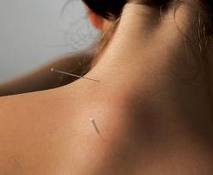
Professional sports teams are also now offering Acupuncture their players both to treat an injury and to keep them performing at their peak.
Many high profile teams have dedicated acupuncturists on board, including the British Rugby team, many Premiership football teams and the British Olympic team.
Shin splints Athletes with shin splints were treated with either acupuncture alone, acupuncture and sports medicine or sports medicine.
Tennis elbow Sufferers treated with acupuncture had significant reductions in pain and improvements in arm function in comparison to those treated with sham acupuncture.
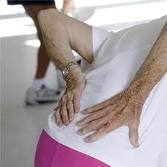 Neck pain New research has found that office workers who suffer from chronic neck and shoulder pain felt the benefits for 3 years following a course of acupuncture treatment.
Neck pain New research has found that office workers who suffer from chronic neck and shoulder pain felt the benefits for 3 years following a course of acupuncture treatment.
Some insurance companies may cover Acupuncture. If you call our office with your insurance information, we will be happy to call your insurance and check on Acupuncture coverage. You can also call the member services phone number on your insurance card and ask them if acupuncture is covered.
Medicare does not cover Acupuncture, sorry.
Here is a nice article about Acupuncture:
Acupuncture and Improved Athletic Performance. By Alex McDonald, MD 1/5/2011 Acupuncture has it’s origins in ancient China. For thousands of years practitioners of Eastern medicine have developed acupuncture skills and techniques that have been refined and re-refined into a very effective and precise medical art. However, it is still in many ways an art and can differ greatly from one practitioner to another. Within recent decades acupuncture has gain broad acceptance within Western medicine and has been scientifically show to have great benefit in many different medical and health circumstances. One of many specific uses for acupuncture that has been closely examined is it’s effect on athletic performance. Athlete’s have been shown to be more willing to engage in Complementary and alternateive Medicine (CAM), 56%, as compared to the general population, 36%. So is there an actual benefit to acupuncture on athletics? After a brief literature review, the answer is a resounding yes. Keep in mind, that there are many additional benefits of acupuncture, which are beyond the scope of this article.
It should be noted that there are several different methods of “acupuncture” all of which utilize a complex map of meridians and points on the body. Some of the more common types of treatment include; Needling, where a tiny needle is inserted into/thru the skin; Acupressure, where the skin is not penetrated; Transcutaneous electrical acupoint stimulation (TEAS), where an electrical stimulus is applied at specific acupuncture points by an electrode placed on the skin; Lastly, when an electrical stimulus is applied through a needle inserted into/thru the skin. All of these various modalities have been show to be beneficial to athletic performance.
There have been several studies, which point toward improved athletic performance with the use of acupuncture. Although there are certainly several different pathways involved, the major factors are most likely, reduced tension in the muscle, increased blood flow, increased oxygen utilization, and psychological effects.
Endurance athletics is particularly attuned to the effect of oxygen consumption and utilization and acupuncture has been shown to increase VO2 max. In one study by Lin et al. 3 groups of athlete’s were run to exhaustion. The control group had no treatment, the acupuncture group had auricular acupuncture treatment, and the third group had auricular acupressure treatment (no needle). The group that had received acupuncture treatment had a statistically significant higher measured VO2 max at exhaustion.
Muscular force production and recovery has also been shown to improve with acupuncture . In one study by So et al., participants completed 3 successive days of isokinetic knee exercises. The treatment group received TEAS right after exercise for 15min, where electrodes and current was applied to specific acupuncture points. A second, control group received pseudo-TEAS for 15min right after exercise, where electrodes where placed on points which were not established acupuncture points. Maximal muscular force was measured before and after exercise, as well as at 5min increments during the 15 minutes of TEAS or pseudo-TEAS treatment. The results showed that the group treated with TEAS had significantly improved recovery time andwere able to generate greater maximal force and create it sooner than the pseudo-TEAS group. There have been additional studies, which demonstrate improved recovery after endurance exercise with acupuncture treatment, showing lower heart rate and lactic acid levels (lin).
In addition to allowing for higher muscle force production after acupuncture, studies have also demonstrated reduced muscle 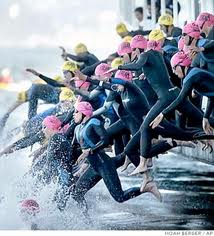 tension (de Sousa). Muscle fibers have an optimal length at which state they function best. If the muscle is stretched to long then contraction will be sub maximal, additionally, if the muscle is pre-contracted and too short then, again, contraction will be sub maximal. Part of the theory behind why muscular forces are greater after acupuncture is that the muscle is better able to relax to it’s optimal length. Acupuncture likely achieves this through two methods. First, it functions to relax the muscle itself. Secondly, it release tension in the fascia surrounding the muscle. Connective tissue, known as fascia is continuous and contiguous throughout the entire body form the bottom of the feet to the top of the head. This is one reason why treatment to one specific area, such as the leg can positively impact distance structure such as the shoulder. In one anecdotal, albeit uncommon situation, a woman with knee pain experienced symptom relief after acupuncture releasing tight fascia in her jaw.
tension (de Sousa). Muscle fibers have an optimal length at which state they function best. If the muscle is stretched to long then contraction will be sub maximal, additionally, if the muscle is pre-contracted and too short then, again, contraction will be sub maximal. Part of the theory behind why muscular forces are greater after acupuncture is that the muscle is better able to relax to it’s optimal length. Acupuncture likely achieves this through two methods. First, it functions to relax the muscle itself. Secondly, it release tension in the fascia surrounding the muscle. Connective tissue, known as fascia is continuous and contiguous throughout the entire body form the bottom of the feet to the top of the head. This is one reason why treatment to one specific area, such as the leg can positively impact distance structure such as the shoulder. In one anecdotal, albeit uncommon situation, a woman with knee pain experienced symptom relief after acupuncture releasing tight fascia in her jaw.
Acupuncture has been shown to increased blood supply throughout the body, particularly to the muscle during and after acupuncture treatment (Ohkubo). This is one probable reason for why VO2 max has been shown to increase with acupuncture treatment. The act of microtrauma to muscle seems to create a healing response form the body without actually cause notable trauma. When an injury occurs there is a highly sophisticated response of hormonal, neural and metabolic intermediates that stimulate the healing response. Most notably in this situation, increased blood flow and resultant increased oxygen flow. Although slightly out of the scope of this article, acupuncture has been show to be beneficial during injury rehabilitation for many of the same reasons. Injured structures require blood flow to provide nutrients and metabolites to repair damaged tissue, as well as carry away waste products. Acupuncture has been show to be particularly helpful to increase blood flow to tendon 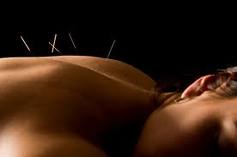 injuries which typically have a very low blood flow, such as the achilles (Kubo).
injuries which typically have a very low blood flow, such as the achilles (Kubo).
Lastly, acupuncture has been show to decrease pain. The application of acupuncture has been show to have potential analgesic effect through the activation of endogenous opioid system within the body (Ma). That is to say, that acupuncture causes the release of substances naturally found in the body, known as endorphins, which act on the same neural pathways where medicines such as morphine and codeine. We have all experienced this sense of invincibility, or “no pain” during moments of emergency.
The Placebo Effect:
There have been some case studies, which describe immediate and significant improvement in athletic performance after commencing a regular acupuncture program. . For example, Kaada reported a mean improvement of 2.3 s in 800 m track racing and 4.3 s in 1000m road racing (Usichenco). The points for acupuncture were based on specific complaints by the athlete, for example, stomach pain, arm fatigue, stiffness of the shoulder and excitement and tremor of specific muscles. It is very difficult to explain these benefits based solely on physiology. As a result other causes of the benefits have been proposed, especially the placebo effect. The placebo effect being the benefits are psychological and due to the athlete’s belief that a treatment is helping and it becomes a self fulfilling prophecy. Some researchers argue that placebo, in addition to physiological effects, may constitute 30–50% of the entire clinical effect of acupuncture (Lundenburg) although, this cannot be confirmed. However, the placebo effect alone has been shown to produce the same performance improvement in trained athletes, as could be achieved using various pharmacological agents—caffeine and sodium bicarbonate in cyclists and anabolic steroids in weight lifting, thus even challenging the specific effect of these drugs (Usichenco). As a result, if a treatment helps an athlete believe that they will perform better, regardless of any physiologic base, than so be it!
There is a significant about information that indicates acupuncture can and does improve athletic performance. These benefits are mediated thru numerous physiologic and psycho logic pathways. There are certainly other benefits to acupuncture which have not been touched upon in this article. As a result it may be something that an athlete might utilize to take their training and racing to the next level.
Alex M. McDonald, MD is a professional triathlete, First Endurance Research Board Member, and endurance coach at Fast Forward Triathlon. Alex’s professional interests lie in coaching endurance athletes, sports medicine and exercise physiology. He obtained his MD degree from the University of Vermont. Prior to medical school, Alex graduated from Connecticut College with an emphasis on both the biological and social sciences. He currently trains and lives, with is wife and daughter, in Durham, NC.
References:
Improved performance in endurance sports through acupuncture].
Benner S, Benner K. Sportverletz Sportschaden. 2010 Sep;24(3):140-3. Epub 2010 Sep 15. German.
Local increase in trapezius muscle oxygenation during and after acupuncture.
Ohkubo M, Hamaoka T, Niwayama M, Murase N, Osada T, Kime R, Kurosawa Y, Sakamoto A, Katsumura T. Dyn Med. 2009 Mar 16;8:2.
Immediate effects of acupuncture on strength performance: a randomized, controlled crossover trial. Hübscher M, Vogt L, Ziebart T, Banzer W.
Eur J Apple Physiology. 2010 Sep;110(2):353-8. Epub 2010 May 25.
Ergogenic effect of acupuncture in sport and exercise: a brief review.
Ahmedov S. J Strength Cond Res. 2010 May;24(5):1421-7. Review.
Effects of acupuncture and heating on blood volume and oxygen saturation of human Achilles tendon in vivo. Kubo K, Yajima H, Takayama M, Ikebukuro T, Mizoguchi H, Takakura N. Eur J Apple Physiology. 2010 Jun;109(3):545-50. Epub 2010 Feb 6.
Lundeberg T, Lund I, Sing A, Näslund J. Is placebo acupuncture what it is intended to be? eCAM ( 2009;) doi:10.1093/ecam/nep049.
Goal-directed Acupuncture in Sports–Placebo or Doping?
Usichenko TI, Gizhko V, Wendt M. Evid Based Complement alternate Med. . [Epub ahead of print]
So RC, Ng JK, Ng GY. Effect of transcutaneous electrical acupoint stimulation on fatigue recovery of the quadriceps. Eur J Apple Physiology ( 2007;) 100:: 693–700.
Nichols AW, Harrigan R. Complementary and alternative medicine usage by intercollegiate athletes. Clin J Sport Med ( 2006;) 16:: 232–237.
Ma SX. Neurobiology of acupuncture: toward CAM. eCAM ( 2004;) 1:: 41–47
Lin ZP, Wang CY, Jang TR, Ma TC, a F, Lin JG, et al. Effect of auricular acupuncture on oxygen consumption of boxing athletes. Chin Med J ( 2009;) 122:: 1587–1590.
Effects of acupuncture stimulation on recovery ability of male elite basketball athletes. Lin ZP, Lan LW, He TY, Lin SP, Lin JG, Jang TR, Ho TJ. Am J Chin Med. 2009;37(3):471-81.
Electromyographicaphic evaluation of the masseter and temporal muscles activity in volunteers submitted to acupuncture. de Sousa RA, minic M, Vitti M, Borsatto MC, Hallak Regalo SC. Electromyographic Clin Neurophysiology. 2007 Jul;47(4-5):243-50
480-633-6837 drjbanas@gmail.com